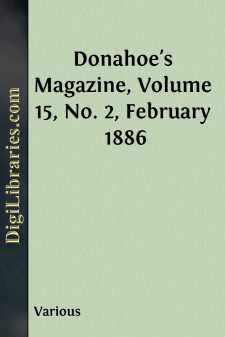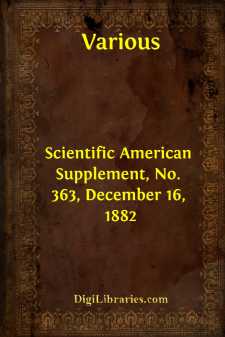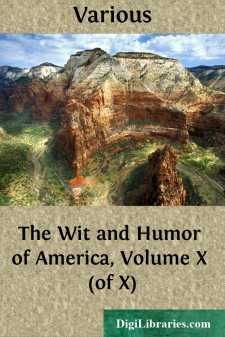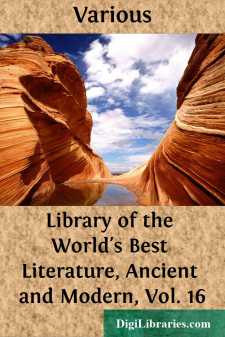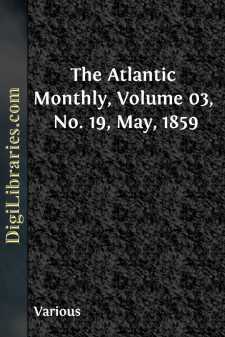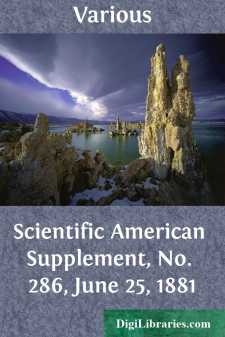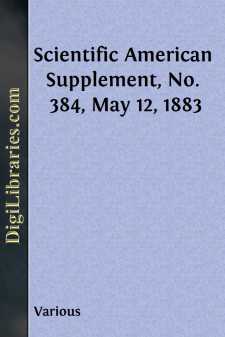Categories
- Antiques & Collectibles 13
- Architecture 36
- Art 48
- Bibles 22
- Biography & Autobiography 813
- Body, Mind & Spirit 141
- Business & Economics 28
- Children's Books 12
- Children's Fiction 9
- Computers 4
- Cooking 94
- Crafts & Hobbies 4
- Drama 346
- Education 46
- Family & Relationships 57
- Fiction 11826
- Games 19
- Gardening 17
- Health & Fitness 34
- History 1377
- House & Home 1
- Humor 147
- Juvenile Fiction 1873
- Juvenile Nonfiction 202
- Language Arts & Disciplines 88
- Law 16
- Literary Collections 686
- Literary Criticism 179
- Mathematics 13
- Medical 41
- Music 40
- Nature 179
- Non-Classifiable 1768
- Performing Arts 7
- Periodicals 1453
- Philosophy 64
- Photography 2
- Poetry 896
- Political Science 203
- Psychology 42
- Reference 154
- Religion 513
- Science 126
- Self-Help 83
- Social Science 81
- Sports & Recreation 34
- Study Aids 3
- Technology & Engineering 59
- Transportation 23
- Travel 463
- True Crime 29
Donahoe's Magazine, Volume 15, No. 2, February 1886
by: Various
Description:
Excerpt
The Columbian Abbey of Derry.
One bright sunny day last summer I found myself in the city of Derry, with some hours to spare. I passed them in rambling aimlessly about whither fancy or accident led me,—now on the walls, endeavoring to recall the particulars of that siege so graphically described by Macaulay, now in the Protestant Cathedral musing on the proximity of luxuriously-cushioned pew and cold sepulchral monument along which the sun, streaming through the stained windows, threw a mellow glow that softened but did not remove the hideousness of the death's emblems on them—now wandering down the busy street and admiring the beauties of the Casino College, which, like the alien cathedral a little distance up, rejoices in the patronage of St. Columb and is built on the site of his old monastery. Here I lingered long, trying to picture to myself the olden glories of the spot on which I stood, for
"I do love these ancient ruins;
We never tread upon them
But we set our foot upon some reverend history;"
although here not an ivy-clasped gable, or even a mossy stone remains to claim the "passing tribute" of a sigh, or a vain regret for the golden days of our Irish Church. Yet its very barrenness of ruins made it dearer to my heart, for one never clings more fondly to the memory of a dear friend than when all mementoes of him are lost. As warned by the stroke of the town-clock, I hurried down to the station to be whirled away to Dublin, I thought that perhaps my fellow-readers of the Magazine would bear with me while I gossiped for half an hour on the story of this grand old monastery, the mother-house of Iona.
You know where Derry is, or if you don't your atlas will tell you, that it is away up in the north of Ireland, where, situated on the shores of the Lough Foyle, coiling its streets round the slopes of a hill till on the very summit they culminate in the cross-crowned tower of St. Columb's Cathedral, it lies in the midst of a beautiful country just like a cameo fallen into a basket of flowers. The houses cluster round the base of the hill on the land side, spread themselves in irregular masses over the adjoining level, or clamber up the opposite rise on the brow of which stands St. Eugene's Cathedral, yet unfinished, and the pile of turrets which constitute Magee College. A noble bridge spans the Foyle, and through a forest of shipmasts one may see on the other side the city rising up from the water, and stretching along the bending shore till it becomes lost in the villa-studded woods of Prehen.
The massive walls, half hidden by encroaching commerce, the grim-looking gates, and the old rusty cannon whose mouth thundered the "No" of the "Maiden City" to the rough advances of James, in 1689, give the city a mediæval air that well accords with its monastic origin. For, let her citizens gild the bitter pill as they may, the cradle of Derry—the Rochelle of Irish Protestantism—was rocked by monks—aye, by monks in as close communion with Rome as are the dread Jesuits to-day.
Fourteen hundred years ago the Foyle flowed on to mingle its waters with ocean as calmly as it does to-day, but its peaceful bosom reflected a far different scene. Then the fair, fresh face of nature was unsullied by the hand of man. "The tides flowed round the hill which was of an oval form, and rose 119 feet above the level of the sea, thus forming an island of about 200 acres." A Daire or oak grove spread its leafy shade over the whole, and gave shelter to the red deer and an unceasing choir of little songsters. It was called in the language of the time "Daire-Calgachi." The first part of the name in the modern form of Derry, still remains—though now the stately rows of oak have given way to the streets of a busy city, and the smoke of numerous factories clouds the atmosphere.
One day, in the early part of 546, there visited the grove, in company with the local chieftain, a youth named Columba, a scion of the royal race of the O'Donnells. He was captivated by its beauty. It seemed the very spot for the monastery he was anxious to establish. He was only a deacon; but the fame of his sanctity had already filled the land, and the princes of his family were ever urging him to found a monastery whose monks, they hoped, would reflect his virtues and increase the faith and piety of their clan. This seemed the very spot for such an establishment. The neighborhood of the royal fortress of Aileach, that
"Sits evermore like a queen on her throne
And smiles on the valleys of green Innishowen,"
promised security; the river an unfailing supply of fish; the woods material to build with; and, better than all, the lord of the district was his cousin Ainmire, from whom Columba had only to ask to receive. He did ask the island for God, and his request was joyfully complied with.
It was just three years after the deacon-abbot of Monte Casino had passed to his reward, that the young Irish deacon began his monastery. To erect monastic buildings in those days was a work of very little labor....


